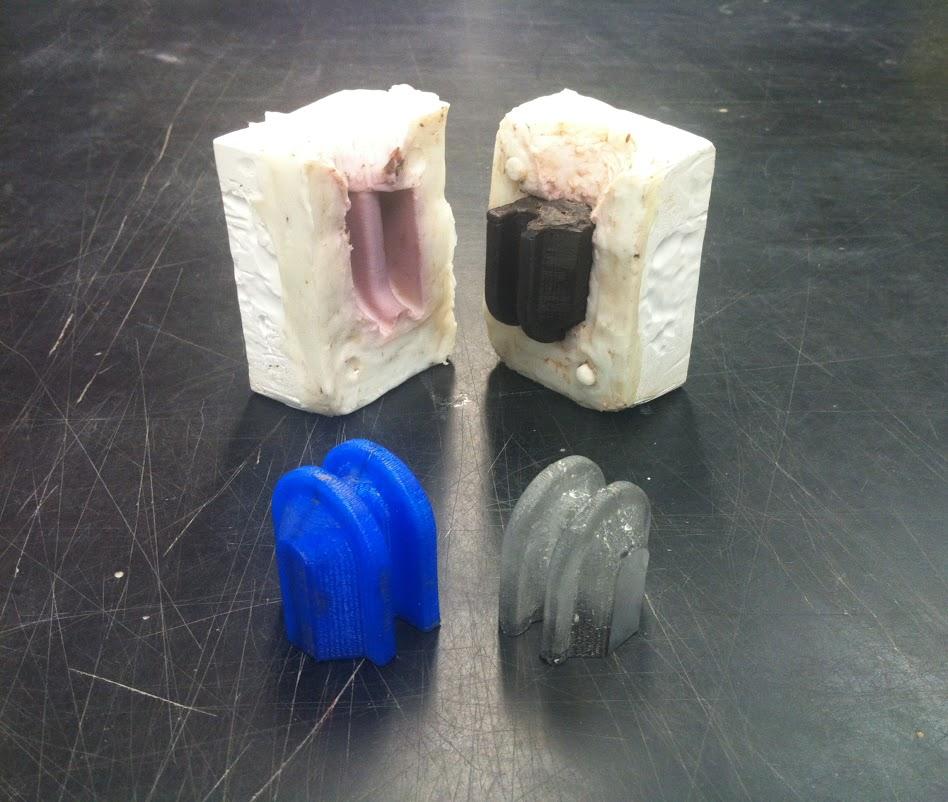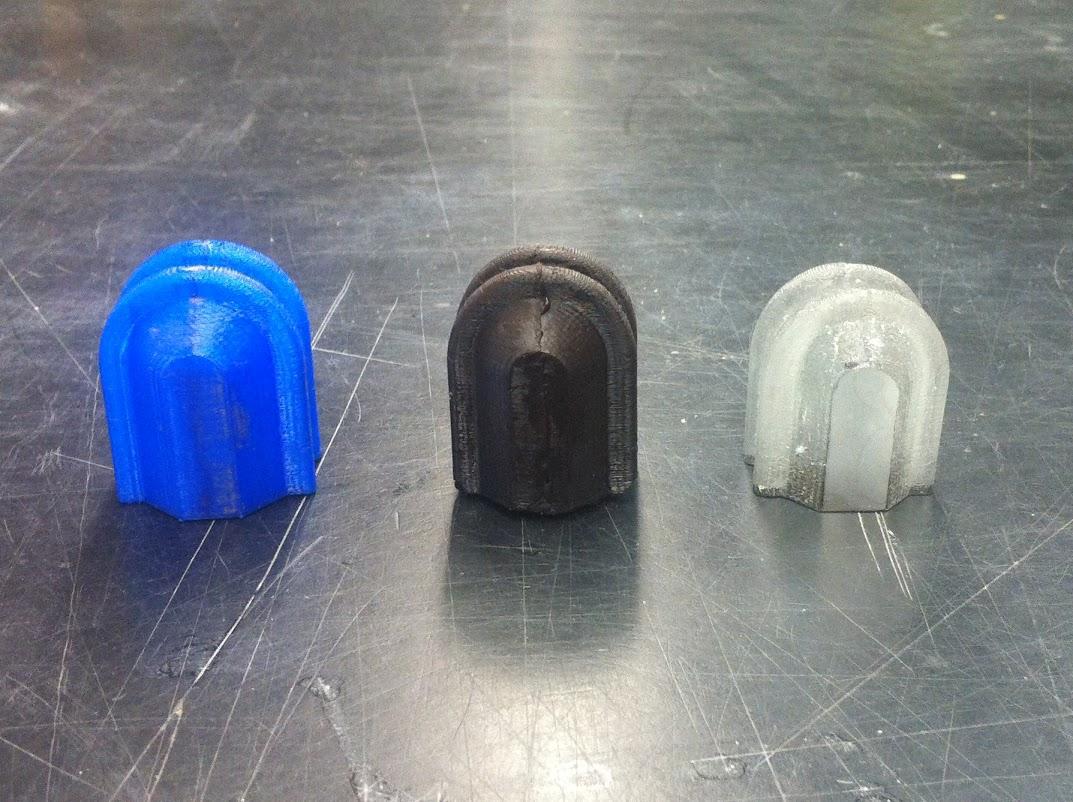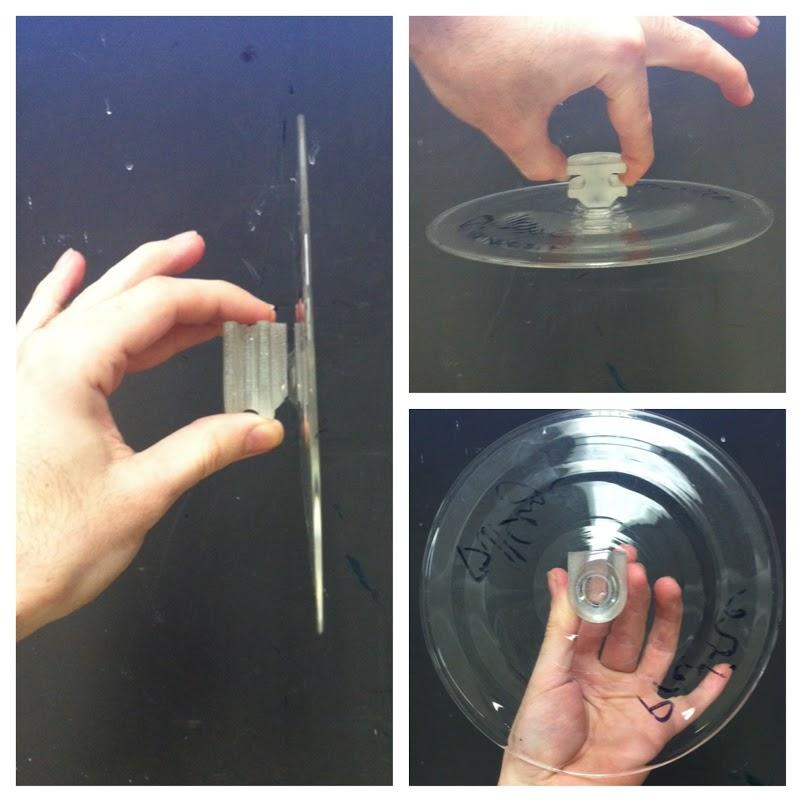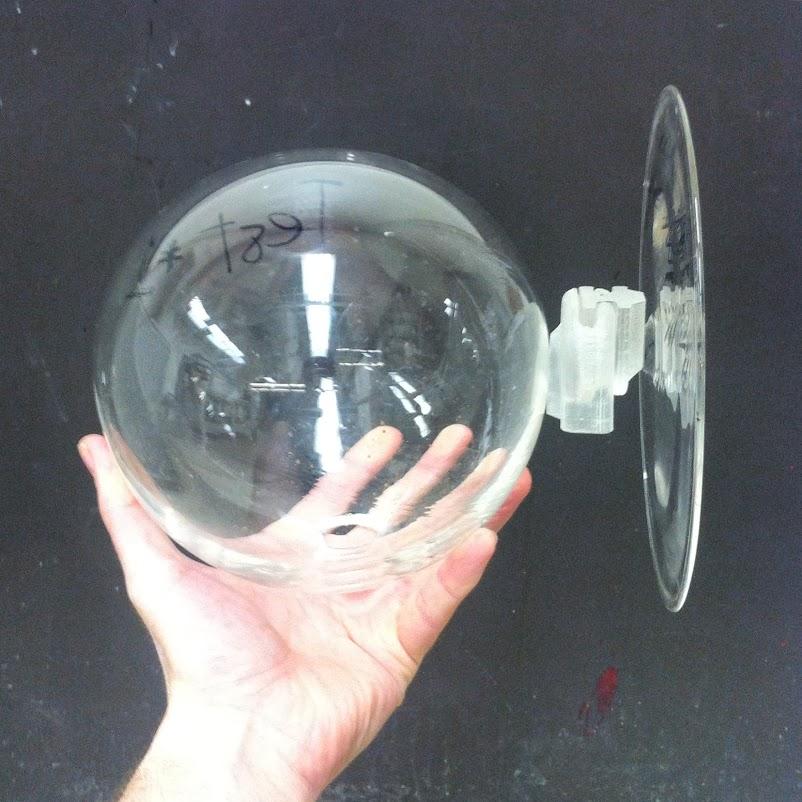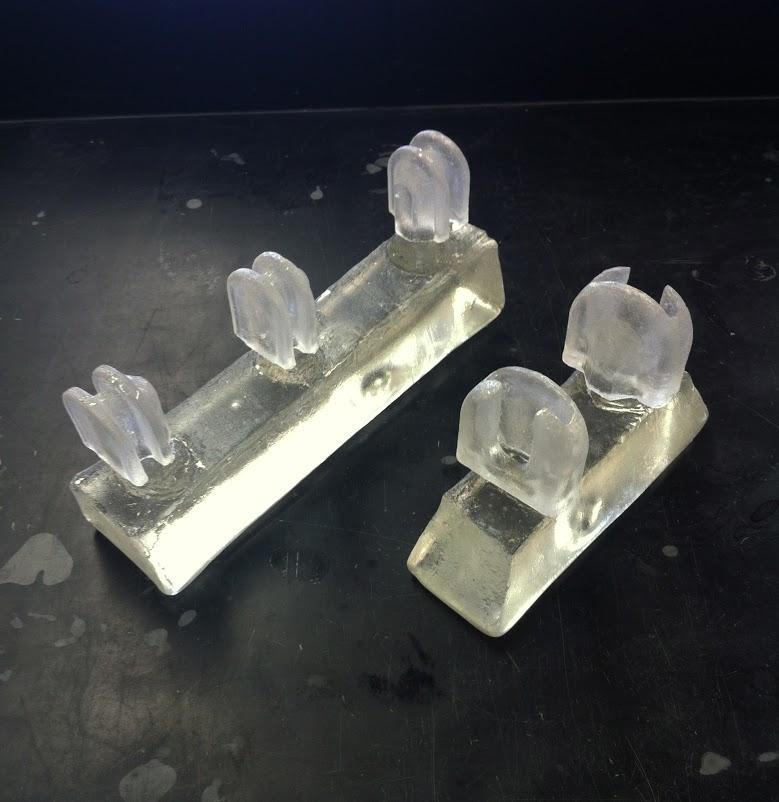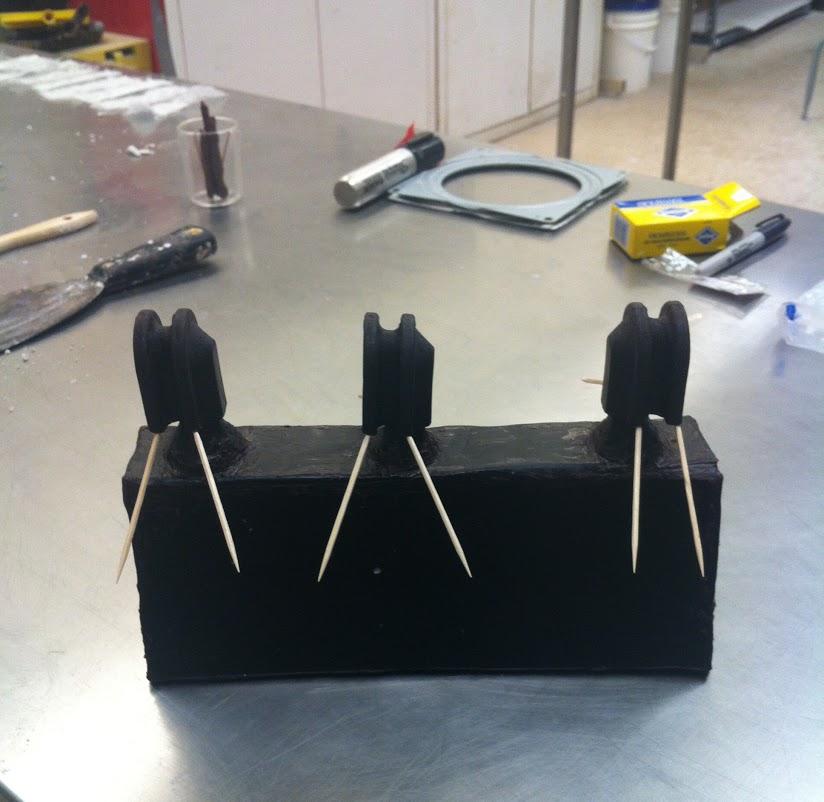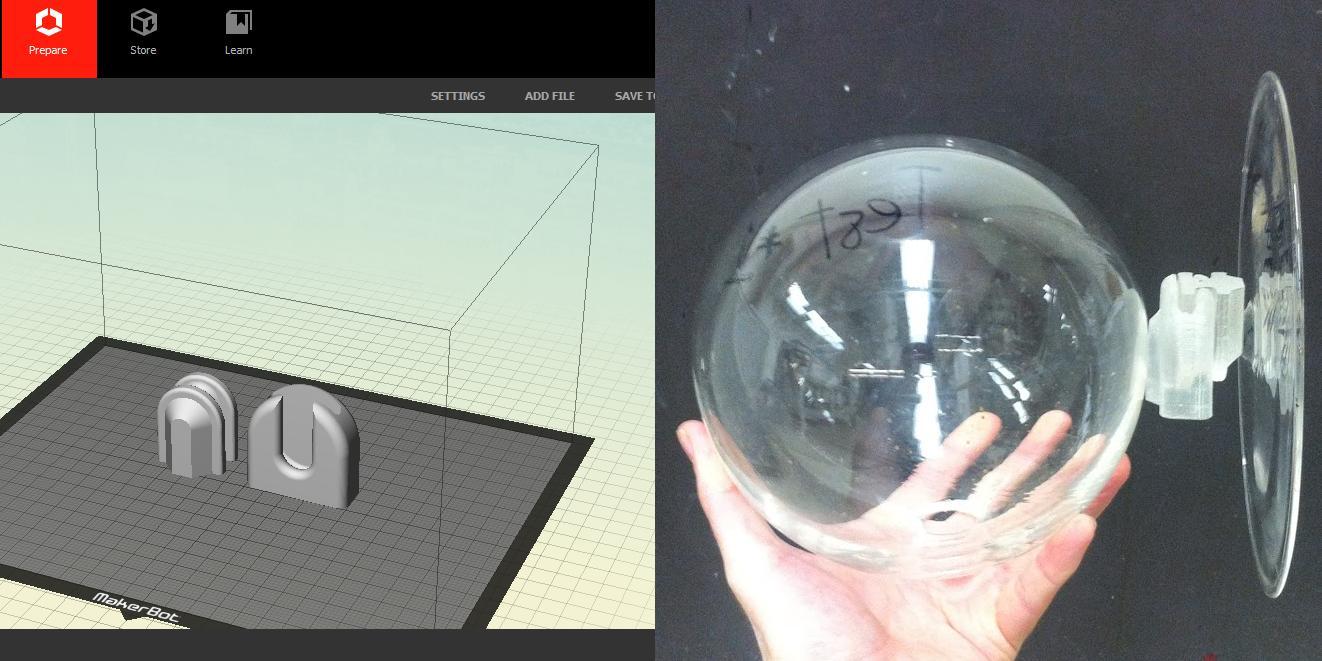 One of the greatest benefits of 3D printing is the ability to use the technology in order to create custom objects. If you can design it in CAD, you can probably 3D print it. This has been true to a certain extent, especially when considering the use of desktop 3D printers. These machines, unlike their industrial level counterparts, are limited to printing in plastic and plastic composite materials. For Alex Morrison, an undergraduate student working towards his BFA in the glass program at Rochester Institute of Technology (RIT), this limiting factor was not enough to deter him from using the amazing technology to create custom glass products.
One of the greatest benefits of 3D printing is the ability to use the technology in order to create custom objects. If you can design it in CAD, you can probably 3D print it. This has been true to a certain extent, especially when considering the use of desktop 3D printers. These machines, unlike their industrial level counterparts, are limited to printing in plastic and plastic composite materials. For Alex Morrison, an undergraduate student working towards his BFA in the glass program at Rochester Institute of Technology (RIT), this limiting factor was not enough to deter him from using the amazing technology to create custom glass products.
Recently RIT’s School for American Crafts purchased a MakerBot Replicator 5th Generation 3D printer, and the school administrators wanted to begin implementing it into the classroom environment. Surely glass making was not one of the uses that anyone had in mind when they purchased this 3D printer, right? Wrong! At least not for Morrison, who has found quite the unique use for this technology.
“I’m using the printer to create objects I design myself through CAD software that cannot be made using traditional methods,” Morrison tells 3DPrint.com. “I can use the computer to create very exact objects when I need to maintain certain dimensions. I can make textures and shapes that come naturally to a computer program but would take hours to produce by hand. I believe that it’s important for everyone who uses 3D printers [to print] print an object, [that object] doesn’t have to be the last step in the making process.”
In Morrison’s case, the printed objects are just the beginning of a process that takes a simple CAD design and turns it into an amazing custom piece of glass work. To do this, he first takes the object off of the printer and makes a rubber mold out of it. This captures all of the intricate details. This rubber mold is then used in order to create one or multiple wax replicas of the object. After these replicas are created, Morrison uses a mixture of plaster and silica powder to create a mold around the wax, before steaming the wax out. This leaves him with a plaster/silica shell which acts as a mold for his final product.
In Morrison’s case, he focuses on glass objects, so he actually fills these molds with glass nuggets. The molds are placed in a kiln, which is heated to 1500-1600 degrees F in order to completely melt the glass within. The glass turns to a liquid, thus filling up the mold and taking on its shape.
“The kiln slowly cools, or anneals, over a long period of time, anywhere from days to weeks, so that the glass can cool evenly to room temperature,” Morrison tells us. “After the glass returns from a liquid to a solid, the glass will be a copy of the 3D printed object. The mold making process is so accurate that it even holds onto the texture that comes from printing an object layer by layer. I like that these objects still keep their history through this process of casting molten glass into molds.”
Morrison tells us that he is currently looking into exploring exactly how 3D printing can be utilized in contemporary art, while the objects can remain true to their identity as 3D printed objects. While this is Morrison’s first project using 3D printing and glass making together, he plans to continue to use the two together in the future. His knowledge of glass making has allowed him to model his 3D printed objects in ways that are best suitable for glass. As for the pieces which Morrison has made using this unique method, they were two objects that fit inside one another by sliding in place. What is really fascinating about this work is that since these parts are made of glass, rather than plastic, they are compatible with other glass objects.
“I intend to use these parts to connect multiple larger glass objects together,” he explains. “I will be able to assemble glass forms together by sliding them in place, thanks to the objects I designed and 3D printed. Blown glass forms can reach a scale larger than I can achieve with a 3D printer alone, but because of the parts I am making using a 3d printer, I can create sculptures that are much larger and more complex than I can achieve by just blowing glass. Hot glass will fuse to hot glass, and so I can use glass objects made from molds of 3D printed objects for decoration, utility, or even installation purposes. I am implementing new technology with techniques established 2000 years ago by the ancient Roman glassblowers.”
Without a doubt, Morrison is onto a method of glass work which is not being utilized by many others in the field, if any. His unique methods for creating custom glass objects, utilizing the benefits of desktop 3D printing, could spread to more glass makers in the near future. This is just one more example of why every school and university should be introducing this technology into their classrooms. Who would have thought that a MakerBot 3D printer would be able to be utilized to create custom glass?
What do you think about the methods used by Morrison? Will we see this catch on among glass makers in the near future? Discuss in the 3D Printing and Glass Making forum thread on 3DPB.com. Check out some more photos below.
Subscribe to Our Email Newsletter
Stay up-to-date on all the latest news from the 3D printing industry and receive information and offers from third party vendors.
You May Also Like
NSF Awards Kentucky $1M for Advanced Manufacturing
The National Science Foundation has awarded a $1 million grant to the University of Louisville for the Advancing Manufacturing and Building Construction Technologies (NSF AMT) project. This initiative is part...
3D Printing News Briefs, May 11, 2024: 3D Printed Stent, Tower, Sculptures, & More
We’re starting off with medical research in today’s 3D Printing News Briefs, as researchers in Korea used CT images and 3D printing to fabricate an educational simulator for a mastoidectomy....
3D Printing Unpeeled: Wind Turbines, Probiotics and Lenses
TPI Composites, ORNL and Ingersoll Rand are working to make wind turbine tooling segments that can be 18.3 meters long. These elements also include resistive wires that help keep the...
Tethon 3D Releases Cost-effective Bioprinter
Tethon 3D, known for its ceramic-loaded DLP materials, custom resins, and DLP 3D printers, has recently released a bioprinter. Vat polymerization printers like DLP systems have been widely used by...



